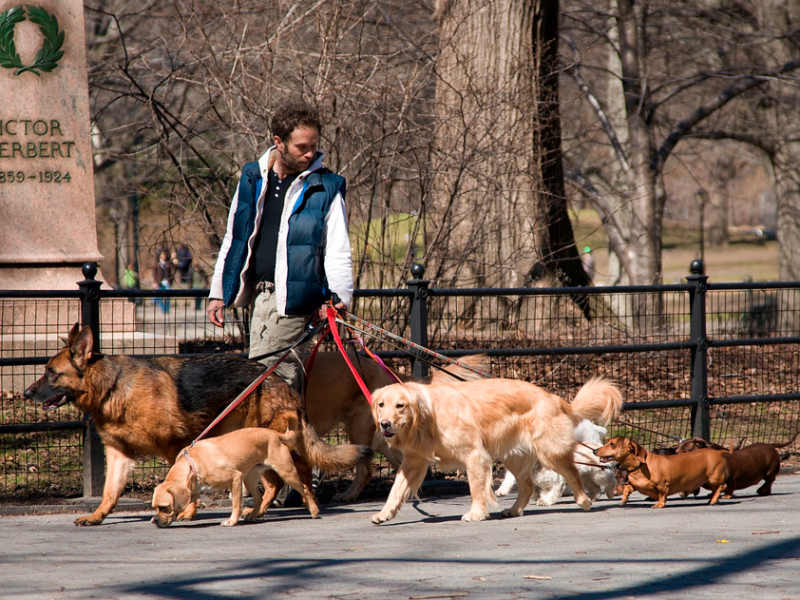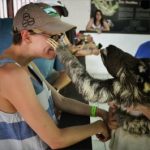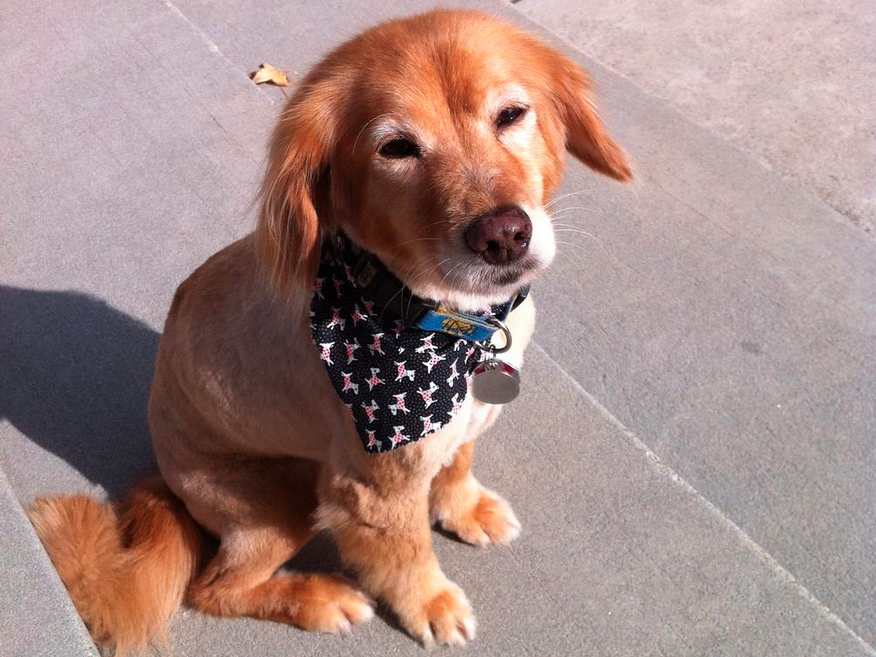Getting your own DNA tested is so last year.
Now you can get a peek inside the genetic makeup of your dog. The method gives a rough estimate (it’s not a perfect science), but it offers some intriguing insight for people who may have no idea what breed their best friend comes from.
The purpose of a dog DNA test is “to identify the breed or breed composite, which can be quite helpful information,” Urs Giger, a veterinary clinician and researcher at the University of Pennsylvania’s School of Veterinary Medicine, told Discover.
In other words, you can learn a lot with a dog DNA test – but like any other DNA test, there are some limits to the accuracy of the results.
I gave it a shot with my family dog, a mixed-breed rescue pooch named Izzie who we adopted from a Golden Retriever shelter in Los Angeles when I was a kid. Here’s what I learned.
This is Izzie. When I adopted her over a decade ago, I was told she was a mixed-breed golden retriever.

She was only a year old at the time, so no one knew how big she'd get (most goldens reach their full size, about 60 lbs., around age 2) or how she'd behave. Our veterinarian told us she was likely a (smallish) golden retriever mutt.
But Izzie stayed roughly the same size, and we stayed curious about her heritage. Now 15 years old, she's friendly and loyal.

Most people get dog DNA tests so they can find out what kind of behavioral traits to expect - golden retrievers tend to be loyal and good with kids, for example, while dalmatians are super active and generally make good guard dogs.
Source: American Kennel Club
When I got the chance to test her DNA, I seized it. There were several options, but I picked the Wisdom Panel DNA test developed by MARS Veterinary, the world's largest pet healthcare provider.

The "3.0" version of the kit - which you can no longer buy from Mars' website but is still available on Amazon - cost me $79.99 . The newest version, which you can get on their site, is $84.99.
Inside, I found two cheek swabs and a set of simple instructions.

The side of the box was labeled with a sample ID so I could register the test online.

Getting dog DNA samples is a lot like getting human DNA samples — you firmly twirl each swab along the inside of each cheek for 15 seconds.

Source: Business Insider
Izzie wasn't a huge fan of the process. But my dad (shown in the background) got a kick out of watching us.

Once I got Izzie's samples, I stuck the swabs into the holes in the package and let them dry, as instructed, for five minutes. Behold the microscopic Izzie DNA:

Once the swabs were dry, I resealed them, packed them up, and popped the package in the mail. At Wisdom Panel's lab, Izzie's DNA would be scanned and analyzed in a database of 250 dog breeds.

The test looks for 1,800 different "markers": places in Izzie's DNA where there are signature variations that can help determine which breeds she's most likely made up of. The test also looks for coyote and grey-wolf markers, since coyotes, wolves, and domestic dogs can interbreed. (They're all members of the same genus, Canis, but belong to distinct subspecies.)
Source: Illinois State Museum; Wisdom Panel
After two weeks, I got an email telling me Izzie's results were ready. I have to admit: I was completely surprised by what I found. Here's the first screen I saw after logging on to WisdomPanel.com:

Chow chow and Cocker spaniel?! American Eskimo and Samoyed?! So much for my "mini golden retriever" assumption ...

Izzie doesn't look like a Cocker spaniel, even though her results say she's nearly 38% Cocker. At first, I couldn't believe it, but I kept reading the results, which appeared on several pages:

Source: American Kennel Club
The personality certainly fits — Cockers are known for being members of an active "sporting breed." They thrive on daily exercise, are intelligent and gentle, and do well as part of a family.

Although Izzie's DNA suggested she's 25% chow chow, she doesn't look like that breed either. Still, a few personality traits sounded familiar.

Here's the screen that got me: Izzie is 12.5% American Eskimo dog. With the exception of the perky ears and white, fluffy coat, Izzie does kind of look like the images below — I can see some likenesses in the eyes and snout, for example.

The last breed in her results was Samoyed, a type of dog originally named after a group of nomadic Siberian reindeer herders who bred the pups to round up reindeer and pull sleds. This dog's tail looks a lot more like Izzie's than the other breeds, and its eyes and snout are similar, too.

Her final page of results looked at all the remaining DNA that couldn't be classified into the previous groups. The breeds probably reflect some breeding that happened outside of the three generations that Wisdom Panel tests for. Here are the groups Izzie is likely related to:

No coyote or wolf DNA for Izzie!

It's important to keep in mind that all dogs are members of a single species: Canis lupus familiaris, or the domestic dog. Dramatic differences between breeds within a species is unusual for mammals. But because dogs have been bred for specific characteristics over many years, they have some pretty notable physical differences.

Source: American Kennel Club
Izzie — with her mix of Cocker spaniel, chow chow, American Eskimo, and Samoyed traits — is certainly unique. She's small in stature but big in personality, and she's gentle and loving, despite her occasional bark.


